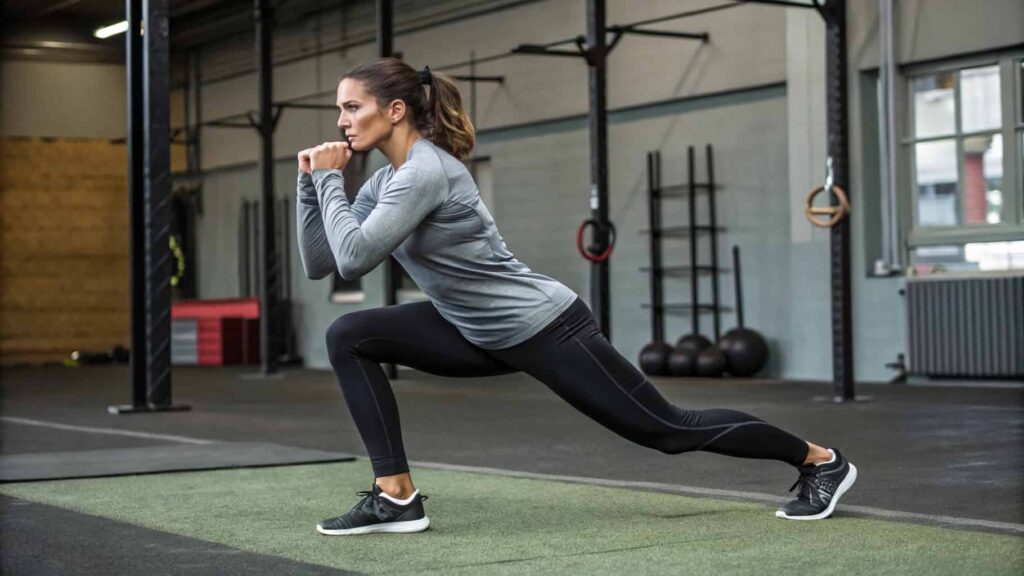Cardiorespiratory fitness plays a vital role in overall health and longevity. It measures how well your heart, lungs, and muscles work together to deliver oxygen during sustained physical activity. Whether your goal is to enhance athletic performance, improve long-term heart health, or simply boost your energy levels, improving your cardiorespiratory fitness is essential.
In this comprehensive guide, we’ll answer the important question: which type of exercise is best for improving cardiorespiratory fitness? We’ll explore a variety of effective workouts, examine relevant scientific studies, and compare their effectiveness. Additionally, you’ll learn how factors like intensity, frequency, and mental engagement can significantly impact your cardiovascular endurance.
What is Cardiorespiratory Fitness?
Cardiorespiratory fitness refers to how well your heart, lungs, and muscles work together to keep your body moving during physical activity. In simple terms, it’s your body’s ability to take in oxygen, deliver it through your blood, and use it efficiently while you’re exercising. Think of it like your body’s energy delivery system — the stronger it is, the longer and harder you can go without getting tired.

Whether you’re walking up stairs, going for a jog, or dancing to your favorite song, your cardiorespiratory system is what keeps you going. Over time, regular exercise can improve this system, making daily activities feel easier and boosting your overall stamina. And the best part? You don’t need to be an athlete to improve it — just a bit of consistent movement can make a big difference.
Why Cardiorespiratory Health Matters?
Strong cardiorespiratory health isn’t just for athletes—it’s essential for daily energy, stamina, and longevity. Research consistently shows that individuals with higher cardiorespiratory fitness levels live longer and have a lower risk of cardiovascular events.
Beyond physical benefits, it enhances cognitive function, supports emotional well-being, improves sleep, and boosts immune response. A heart that pumps efficiently and lungs that deliver oxygen effectively provide a stronger foundation for nearly every bodily system.
The Physiology Behind Cardiorespiratory Training – How It Boosts Your Fitness!
When you engage in aerobic activities, your muscles require more oxygen. This triggers your respiratory system to breathe faster and deeper, your heart to beat quicker, and your blood vessels to expand. Over time, consistent training causes your heart muscle to become stronger, increases capillary density in muscles, and boosts mitochondrial efficiency.
This means you can perform tasks with less effort, your resting heart rate lowers, and your body becomes more adept at managing physical stress. Essentially, aerobic training transforms your entire oxygen transport system for optimal performance.
Which Type Of Exercise Is Best For Improving Cardiorespiratory Fitness? – A Scientific View!
So, which type of exercise is best for improving cardiorespiratory fitness? According to scientific consensus, aerobic exercise leads the pack. These are rhythmic, sustained activities that use large muscle groups—think running, swimming, cycling, or dancing. Numerous studies have proven that both moderate-intensity continuous training (MICT) and high-intensity interval training (HIIT) significantly boost VO₂ max and endurance.
However, HIIT often shows faster results in less time. The key lies in consistency, intensity, and engaging the right muscle groups. Activities that keep your heart rate elevated for extended periods stimulate adaptations in the lungs, heart, and muscles, making them the most effective for cardio endurance.
Top Aerobic Exercises For Building Endurance – The Best Workouts for Lasting Fitness!
| Exercise | Benefits | Tips for Effectiveness |
|---|---|---|
| Walking | Low-impact, easy to start, great for beginners | Brisk pace, add incline or hills, use interval walking |
| Jogging/Running | Builds stamina, improves cardiovascular endurance | Vary intensity with sprints or long-distance runs, wear proper shoes |
| Cycling | Great for legs, low impact, good for endurance | Maintain steady cadence, add interval sprints |
| Swimming | Full-body workout, improves lung capacity, joint-friendly | Swim for 20-30 minutes continuously, alternate strokes |
| Rowing | Engages upper & lower body, excellent calorie-burner | Focus on proper form, mix steady rowing with intervals |
| Dancing | Fun, boosts coordination, improves heart rate | Choose high-energy routines, aim for 45-60 minutes |
| Group Fitness | Structured, motivating, combines cardio and strength | Follow the class pace, vary intensity, stay consistent |
High-Intensity Interval Training (HIIT) – The Game-Changer!
HIIT involves alternating between short bursts of intense activity and brief recovery periods. It’s been proven to enhance VO₂ max and mitochondrial density more efficiently than traditional cardio. By pushing your body to work hard in short bursts, HIIT helps improve both aerobic and anaerobic capacity.
- 20 seconds of sprinting, 40 seconds of rest (repeat 10–15 times).
- Can be applied to cycling, running, swimming, rowing, and even bodyweight exercises.
- HIIT is effective for improving both cardiovascular fitness and fat burning, making it ideal for those with limited time.
- Shorter, more effective workouts that improve muscle endurance and aerobic capacity.
- Boosts metabolism, leading to calorie burning for hours after the workout.
- Suitable for all fitness levels: Start with lower intensity intervals, and gradually build up intensity as fitness improves.
Comparing Aerobic vs Anaerobic Training – Which Is Better for Your Fitness Goals?
Aerobic and anaerobic training each offer unique benefits depending on your fitness goals. Aerobic exercises, like walking, jogging, or swimming, focus on building endurance and improving heart and lung health over time. These workouts are done at a steady pace and use oxygen to fuel your body. On the other hand, anaerobic exercises, such as sprinting or lifting weights, involve short bursts of high-intensity activity and help build strength, speed, and muscle mass.
If your goal is to boost stamina and overall heart health, aerobic training is ideal. But if you want to gain strength or increase power, anaerobic workouts are more effective. For the best results, a combination of both types can help you stay balanced, fit, and healthy.
The Role of Resistance Training in Cardiorespiratory Health:
While resistance training is commonly associated with muscle building, it also plays a vital role in supporting cardiorespiratory health. By improving metabolic function and reducing blood pressure, resistance training enhances overall heart health. When performed in a circuit format with minimal rest, it can keep the heart rate elevated, providing aerobic benefits.

This combination of muscle strengthening and cardiovascular conditioning helps increase endurance and improve circulation. Furthermore, regular resistance training can prevent muscle loss and improve bone density, making it particularly important as we age. Incorporating it alongside aerobic exercises ensures a more balanced and effective fitness routine.
Low-Impact Cardio Options for Joint-Friendly Fitness – Need To Know!
While high-impact cardio such as running and jumping can be very effective, it may not be suitable for everyone, particularly those with joint issues or beginners who need to ease into fitness. Low-impact cardio exercises are a fantastic alternative, offering substantial cardiovascular benefits without placing undue stress on the joints. These exercises provide a safe yet effective way to boost heart health while minimizing the risk of injury.
Examples of great low-impact cardio options include:
- Water walking or deep water jogging: The buoyancy of water reduces impact on the joints, while still allowing for an effective cardiovascular workout.
- Rowing machines with resistance control: Rowing is an excellent full-body workout that targets the legs, back, and arms, while being gentle on the knees and hips.
- Low-impact dance classes or senior-friendly fitness classes: These offer a fun way to get your heart rate up without excessive strain on the joints.
For those who are new to exercise or recovering from an injury, starting with these low-impact options can be an ideal way to build up endurance and gradually progress to higher-intensity workouts. As you become fitter, you can increase the intensity or duration, ensuring a gradual improvement in cardiorespiratory fitness without overloading the joints.
How To Structure Your Weekly Cardio Routine?
Structuring your weekly cardio routine is essential for maximizing fitness gains while allowing for proper recovery. Here are key points to help you plan:
- Frequency: Aim for 3 to 5 days of cardio each week, depending on your fitness level and goals. More frequent sessions can be done with lower intensity, while higher-intensity workouts may require more recovery time.
- Intensity: Balance moderate-intensity sessions (like jogging or cycling) with higher-intensity interval training (HIIT). HIIT can be done 1-2 times a week for faster improvements in endurance and fat loss.
- Duration: For moderate-intensity cardio, aim for 30 to 60 minutes per session. If doing HIIT, keep sessions shorter (20-30 minutes) but more intense.
- Variety: Mix up your routine to prevent plateaus and keep things interesting. Include activities like running, swimming, cycling, and walking to engage different muscle groups.
- Rest & Recovery: Ensure at least one or two rest days per week to allow your muscles to recover, especially after high-intensity sessions.
- Progression: Gradually increase the intensity or duration of your workouts each week to continue challenging your cardiovascular system.
How Can Nutrition Support Your Cardio Workouts?
Proper nutrition is essential for fueling your body and maximizing the benefits of your cardio workouts. Carbohydrates are the primary source of energy for endurance activities, so consuming a balanced meal with complex carbs, like whole grains, fruits, and vegetables, before a workout can provide sustained energy. It’s also important to include lean proteins to help repair muscles after exercise.
Post-workout, aim to replenish glycogen stores with carbs and aid muscle recovery with protein. Staying hydrated is crucial—dehydration can hinder performance and recovery. Additionally, consider incorporating healthy fats, such as those from avocados and nuts, for long-term energy support. A well-rounded, nutrient-dense diet helps optimize cardiovascular health and improves workout performance.
Common Mistakes in Cardio Training And How to Avoid Them!
While cardio training offers numerous benefits, many people fall into common traps that can hinder progress or even lead to injury. Here are some mistakes to avoid:
- Overtraining without recovery: Pushing too hard without allowing your body adequate rest can lead to fatigue, injury, or burnout. Ensure you schedule rest days to give your muscles time to repair and your heart to recover.
- Staying in the “comfort zone” (too easy): If your cardio routine isn’t challenging enough, you won’t see improvements. Gradually increase intensity or duration to continue building endurance and cardiovascular health.
- Ignoring warm-ups and cool-downs: Skipping these important steps can lead to muscle stiffness, injury, and inadequate recovery. Always incorporate 5-10 minutes of warm-up and cool-down to prepare and relax your body.
- Poor form, especially in running or rowing: Bad posture and form can lead to joint stress and injury. Focus on maintaining good technique to ensure an effective and safe workout.
- Neglecting strength training: While cardio is vital, combining it with resistance training enhances overall fitness and helps prevent muscle imbalances. Strength training improves endurance and supports better cardiorespiratory health.
Fix: Plan your week with a balanced routine, listen to your body for signs of fatigue, and progressively challenge yourself by increasing intensity or duration.
Cardiorespiratory Fitness and Mental Health – The Mind-Body Connection!
Exercise, especially cardio, is a powerful tool not just for improving physical health but also for enhancing mental waell-being. Engaging in regular cardiovascular exercise can lead to an increase in endorphins and serotonin, hormones that boost mood and contribute to feelings of happiness. Additionally, cardio has been shown to reduce symptoms of anxiety and depression, helping to alleviate stress and improve emotional resilience.

Even just 20-30 minutes of cardio a day can significantly enhance mood and improve mental clarity, making it easier to manage daily challenges. On top of this, consistent cardio exercise improves cognitive function and memory, offering long-term brain benefits. By incorporating cardio into your routine, you not only strengthen your heart and lungs but also boost your mental health, creating a positive feedback loop that enhances both physical and emotional well-being.
FAQs:
Can I improve cardiorespiratory endurance without running?
Yes, you can improve cardiorespiratory endurance without running by engaging in activities like cycling, swimming, or elliptical training. These exercises elevate your heart rate and work large muscle groups, providing excellent cardiovascular benefits. It’s important to stay consistent and challenge yourself with increased intensity or duration.
How often should I do cardio to see results?
To see noticeable results in cardiorespiratory fitness, aim for at least 3-5 cardio sessions per week. Each session should be about 30 to 60 minutes of moderate to vigorous activity. The consistency of your routine will help you build endurance, improve heart health, and burn fat effectively.
Does strength training help improve cardiovascular health?
Yes, strength training supports cardiovascular health by improving muscle endurance, promoting better circulation, and reducing blood pressure. When done in a circuit style or combined with cardio, strength training can elevate your heart rate and provide cardiovascular benefits. It also enhances metabolic function, complementing aerobic exercises for overall fitness.
Is HIIT safe for beginners looking to boost endurance?
HIIT can be safe for beginners if done with appropriate modifications, such as lower-intensity intervals and adequate rest periods. Starting slowly and focusing on proper form is key to avoiding injury. As fitness improves, you can gradually increase the intensity and duration of the intervals to maximize benefits.
What heart rate zone should I target for improving endurance?
To improve endurance, aim for a heart rate zone between 60% to 85% of your maximum heart rate. This range is ideal for building aerobic capacity and enhancing cardiovascular efficiency. Monitoring your heart rate during workouts ensures that you’re training at the right intensity to see improvements over time.
Does swimming build cardio fitness as effectively as running?
Yes, swimming can be just as effective as running for building cardiorespiratory fitness. It provides a full-body workout, increases lung capacity, and improves endurance while being gentle on the joints. The resistance of water adds an extra challenge, making it a great alternative to land-based cardio exercises.
Can yoga or Pilates improve cardiorespiratory health?
While yoga and Pilates are excellent for improving flexibility, strength, and core stability, they don’t typically provide the same level of cardiovascular intensity as aerobic exercises. However, certain styles like vinyasa yoga or power Pilates can elevate the heart rate and contribute to overall cardiorespiratory health. Adding them alongside traditional cardio can enhance overall fitness.
Conclusion:
Improving cardiorespiratory fitness is essential for overall health, and the best way to achieve this is through consistent aerobic exercise. Whether it’s running, swimming, cycling, or high-intensity interval training (HIIT), choosing exercises that elevate your heart rate will help strengthen your heart and lungs. It’s important to combine cardio with proper nutrition, rest, and strength training for balanced fitness.
Be patient and progressive with your workouts to see the best results. Remember, small but consistent efforts can lead to significant improvements in your endurance and overall well-being. So, start at a pace that suits you and gradually challenge yourself to become fitter and healthier.
Also Raed:


Leave a Reply